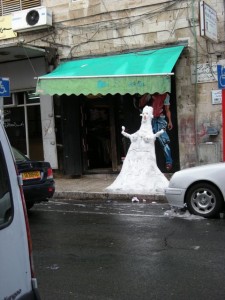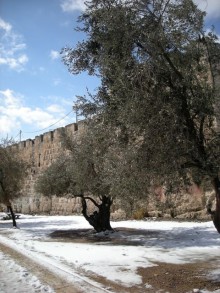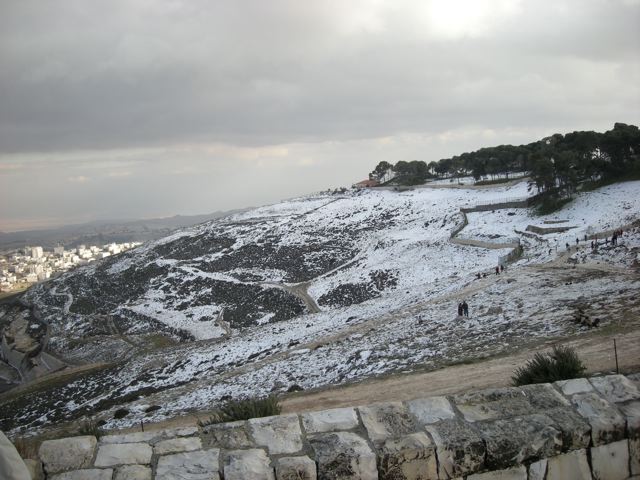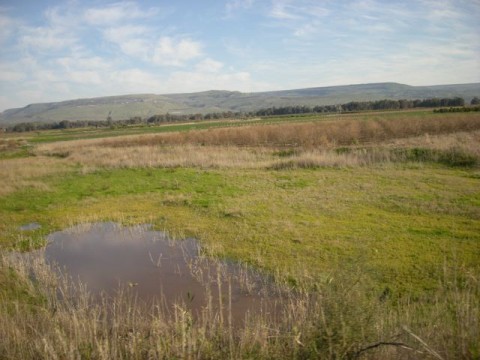
20
Apr

Fellow pilgrim Reverend Terry Burke snapped the picture of me in the Roman bath in Herod’s fortress palace at Masada, Israel on February 4, 2008. Not far north lie the ruins of the Essene community at Qumran, our next stop. Moses would have seen the region from Mt. Nebo across the Dead Sea, the promised land he was not to enter.
During my first visit to Jericho with my parents in 1954, the Dead Sea was markedly broader, the scrolls recently discovered and in the process of being dispersed for analysis. That day it rained for the first time in forty years! The cool temperature cancelled our swim. However, Charles collected a chunk of salt to ship home and taught me the story of Lot’s wife. Humid summers in Lexington vaporized the salt over the next two decades, raising questions for me about what lasts, what hardness means, and the power of water over rock.
During the pilgrimage with St. George’s, I appreciated that the college made the arrangements and marveled at the many changes in the fifty-four years between my journeys. Preparing for the rigorous daily schedules, I felt torn like Bethany sisters Mary and Martha between Girl Scout preparedness and Lot’s wife’s looking-back salt pillar. Chiefly, I meditated on water, life-giving, scarce, purifying, essential.
Snow fell on Jerusalem during both my wintertime visits. In 2008, exposure to spouse Seelye’s work on satellite images of earth and icy regions enhanced my understanding of the tectonic plates, of Mt. Hermon and the sources of the Jordan River at the head of the Rift Valley. I thrilled to walk along King David Street, the divide between the Mediterranean watershed to the west and the Jordan River valley to the east. I better understood the rush of water and debris through wadis, gulches, the dangers of erosion, the grace of snow to percolate soil and replenish underground springs.
During the storm, snow blanketed the riven city, muffling sounds as everyone sought shelter. The day after, the city sparkled in powdery crystalline beauty.
Along Salah Eddin Street young men ebulliently rolled snow folk sentinels on the sidewalks. Though the worn ancient stones were slippery, everyone seemed to enjoy the pause from routine, the clear atmosphere and white ground.
Inevitably, the snow melted. Traffic, business, tensions resumed. More aware of the land underfoot, I observed the occupancy of it. Stony land, stony hearts, stewarding water. Water seeping, running, dripping for irrigation. Water, in plastic bottles, in springs, in baptismal fonts. In the rainy season and along the steadily evaporating Dead Sea, I pondered on the physical world, the spiritual world in my sightlines. What can one person offer, influence, or aid?



